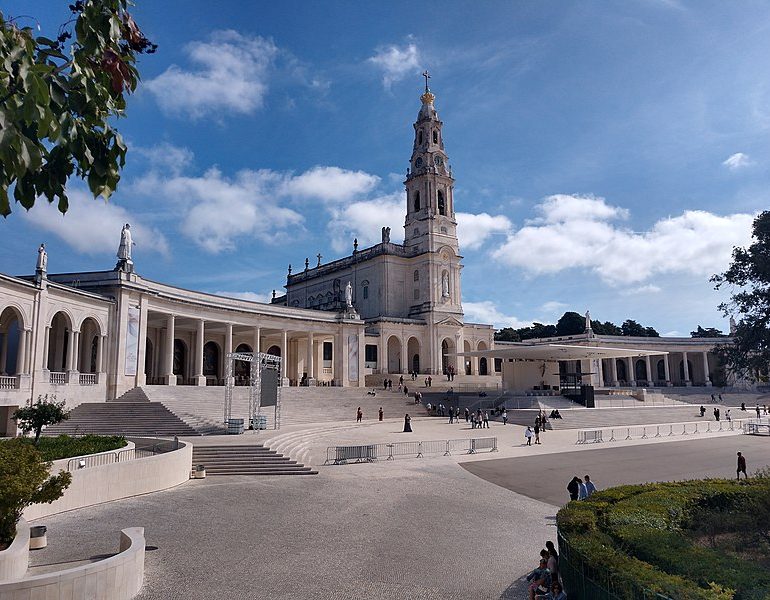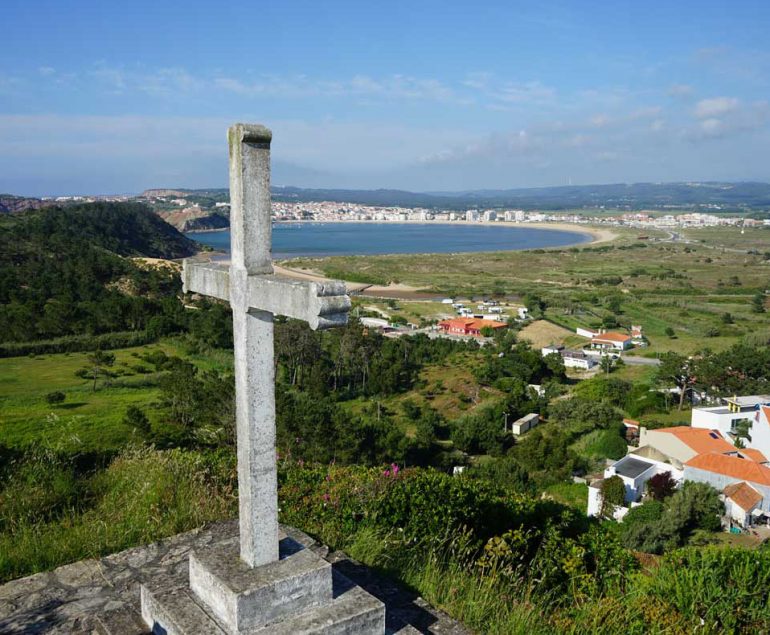Step off the train and the first thing that hits you is the smell. Sweet, buttery cavacas pastries waft from a corner bakery, their sugar shells cracking under the weight of soft dough inside. The streets ahead are lined with tiled façades, not the pristine blue-and-white patterns you might expect in Lisbon, but earthier, quirkier mosaics that speak of a town proud of its artisans. A few steps farther and the rhythm shifts: the sound of water running beneath the cobbled pavement, the rustle of tall trees framing the pathways of Parque D. Carlos I, and the laughter of locals drifting from an outdoor café. This is Caldas da Rainha—a city whose very name means the Queen’s Springs, and whose identity is wrapped up in wellness, creativity, and an unhurried pace of life.
A Queen, A Spring, and the Birth of a City
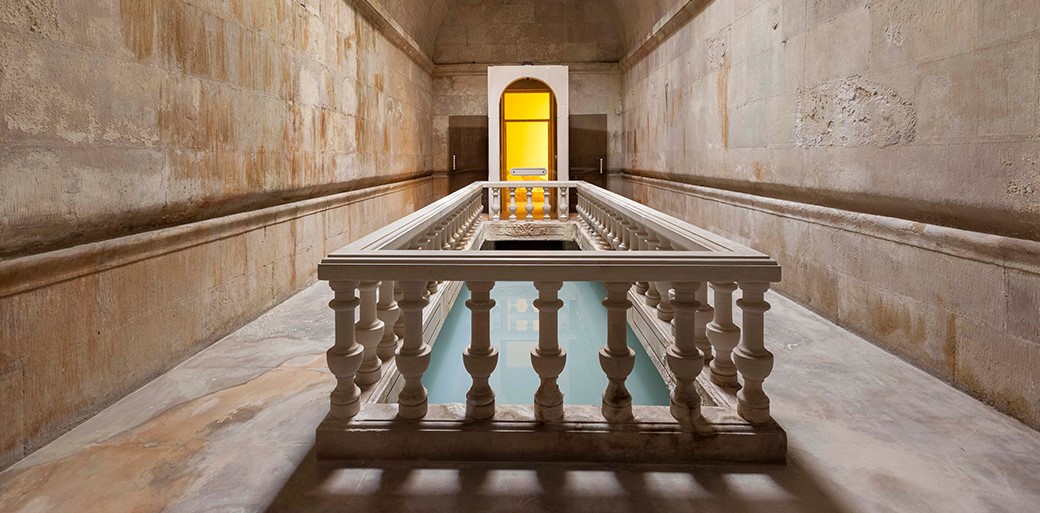
The story of Caldas da Rainha begins in the late 15th century with a queen who refused to look away from human suffering. Queen Leonor of Portugal, wife of King John II, was traveling through the region when she encountered peasants bathing in foul-smelling, sulfurous waters. Curious, she discovered they were not indulging in superstition but easing their ailments—rheumatism, skin problems, lingering pains. Leonor herself tested the springs and felt their healing properties. In 1485, she ordered the construction of a hospital and thermal complex, free to the sick and poor.
From that single act of compassion grew a town. The thermal hospital became Caldas’s beating heart, attracting patients, doctors, and eventually artists and writers who came for both treatment and inspiration. The name—Caldas da Rainha, the Queen’s Spa—stuck. To this day, the original thermal hospital still stands as one of the oldest continuously operating spa institutions in the world.
A Town of Clay and Color

If water was Caldas’s first gift, clay was its second. The town sits on rich deposits that gave rise to a pottery tradition spanning centuries. By the 19th century, Caldas was not just producing utilitarian ceramics but flamboyant, satirical works. Enter Rafael Bordallo Pinheiro, the cartoonist-turned-ceramicist whose playful designs—frogs, cabbages, caricatures—still define the town’s artistic identity. His works were bold, political, humorous, and distinctly Portuguese.
Today, Caldas da Rainha is recognized by UNESCO as a Creative City of Crafts and Folk Arts, cementing its place on the global stage. Walk its streets, and you’ll see why: ceramic murals splash color on walls, shop windows brim with plates shaped like lettuce leaves, and the Ceramics Museum preserves treasures ranging from 18th-century faience to modern experimental works.
For travelers, exploring the town’s ceramics is more than browsing shops—it’s an immersion in cultural pride. Many workshops open their doors, allowing you to watch clay take form on the wheel, feel the weight of a still-warm pot, or try your hand at painting glazes.
The Heartbeat of Everyday Life: Markets and Food

Caldas da Rainha is often called the “Capital of Fruit” thanks to its fertile surrounding orchards. The best place to taste this identity is at the Mercado da Fruta, one of Portugal’s most authentic daily markets. Under its iron-roofed pavilion, stalls overflow with apples, pears, cherries, and figs depending on the season. Farmers sell directly, sometimes from wicker baskets, while fishmongers hawk gleaming sardines and butchers lay out cured sausages.
No visit is complete without trying the cavacas—a kind of oversized profiterole without filling, covered in a crisp sugary glaze. They are messy to eat and unapologetically sweet, often paired with a strong Portuguese coffee. Local restaurants, meanwhile, showcase heartier fare: roast goat, cod baked with cream, and the wines of nearby Óbidos and Bombarral.
Caldas is also known for its tasquinhas—small taverns where petiscos (Portuguese tapas) are shared over laughter and local wine. Don’t miss the ginjinha, a cherry liqueur served in small glasses, especially good after a salty dish of grilled chouriço.
Architecture and Streets that Whisper History
![]()
Beyond food, the town’s very layout tells its story. Praça da República, the main square, is flanked by arcaded buildings that once sheltered merchants. The Mata Rainha Dona Leonor, a woodland park attached to the spa complex, still carries the scent of eucalyptus. The Church of Nossa Senhora do Pópulo, built in 1500, is a rare Manueline structure connected directly to the thermal hospital, where patients once prayed before treatments.
Wandering the center, you’ll see tiled townhouses in varying states of repair, a reminder that Caldas is not a manicured museum-town but a living community. On Saturdays, antique stalls spill into the streets, selling everything from azulejo tiles to vintage radios.
Art, Museums, and Culture
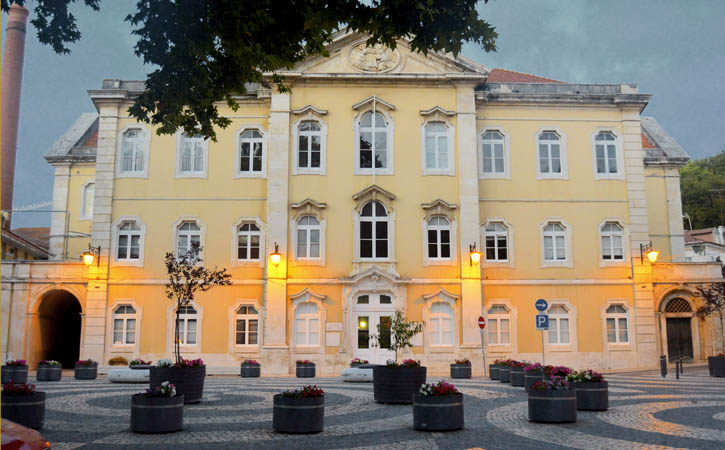
For a relatively small town, Caldas da Rainha punches above its weight in culture. The Museu de Cerâmica sits inside a former manor house and guides visitors through centuries of Portuguese ceramic artistry. Just nearby is the Museu José Malhoa, dedicated to the realist painter who captured Portuguese life in the 19th and early 20th centuries. Its collection includes portraits, landscapes, and satirical works that mirror Bordallo Pinheiro’s humor in clay.
For something more contemporary, the Centro de Artes brings together multiple spaces, from a design museum to galleries hosting temporary exhibitions. Add in a theater, live music bars, and an annual arts festival, and it’s clear Caldas is no sleepy provincial town—it’s a cultural hub.
Green Spaces and Coastal Escapes
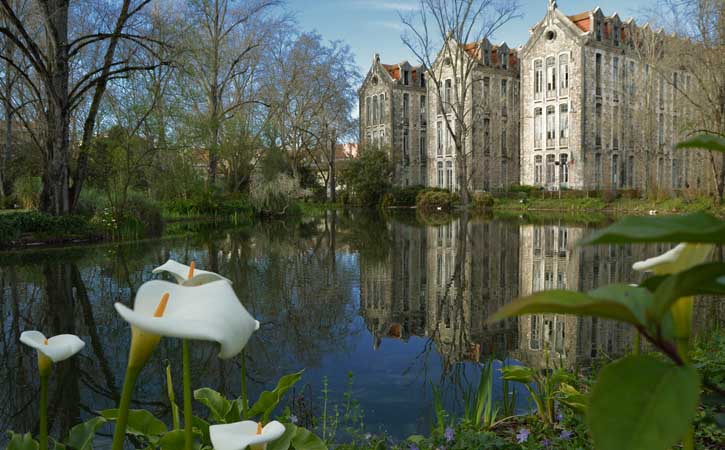
When the rhythm of town life slows, head to Parque D. Carlos I, laid out in the late 19th century as a romantic leisure ground. Its tree-lined avenues, ornamental lake, and wrought-iron bandstand feel like stepping into an old postcard. Families paddle boats on the lake, joggers circle the paths, and students sprawl on the grass with sketchbooks.
A short drive away lies Foz do Arelho, where the Lagoa de Óbidos meets the Atlantic. It’s a rare dual landscape: calm lagoon waters perfect for paddleboarding and windsurfing on one side, crashing Atlantic waves beloved by surfers on the other. From the beach cafés, you can watch fishermen mend their nets at sunset while sipping vinho verde.
For hiking, the surrounding hills offer trails with sweeping views of vineyards and orchards, dotted with chapels and windmills. Many visitors pair Caldas with the medieval village of Óbidos, only 8 km away, with its cobbled streets and annual chocolate festival.
Evenings and Atmosphere
Nightlife in Caldas da Rainha is understated but inviting. Locals gather in Praça da Fruta for a glass of wine at outdoor tables, while younger crowds head to bars tucked in side streets. Some evenings feature fado performances in intimate venues, though just as often you’ll stumble upon a jazz trio or DJ set.
Unlike Lisbon or Porto, this is not a city that stays up until dawn. Instead, the rhythm reflects the town’s spa heritage: conversation, relaxation, and connection. A perfect end to the day might be a soak in a modern thermal spa, where mineral-rich waters still bubble up from the same springs that Queen Leonor once discovered.
Practical Travel Tips
Best Time to Visit: Spring and early autumn (April–June, September–October) are ideal. The weather is mild, orchards are at their most colorful, and the beaches nearby are less crowded than in summer.
Getting There: Caldas da Rainha lies about 90 km north of Lisbon. Direct buses run frequently from Lisbon’s Campo Grande station, taking about 1 hour 15 minutes. Driving offers flexibility, especially if you plan to visit Óbidos, Foz do Arelho, or Nazaré.
Accommodation Highlights:
-
SANA Silver Coast Hotel – a boutique hotel opposite the fruit market, blending historic charm with modern comfort.
-
Inatel Foz do Arelho – for those who want a seaside stay with lagoon views.
-
Guesthouses and local B&Bs – often family-run, with ceramic accents and homemade breakfasts.
Insider Recommendations:
-
Visit the Saturday flea market for antiques.
-
Stop by Pastelaria Machado for the best cavacas.
-
If you’re driving, explore small villages like Salir do Porto, with its giant sand dune and quiet bay.
-
Check the cultural calendar—Caldas hosts frequent festivals celebrating ceramics, arts, and local produce.
Reflection: The Gift of Slowness
Caldas da Rainha doesn’t try to dazzle in the way Lisbon or Porto does. Its charm lies in the layers you only see if you linger—the grandmother selling cherries at the market, the ceramic frog perched on a fountain, the hush of eucalyptus in the spa gardens. It’s a town that invites you to pause, sip, taste, and reflect.
Here’s the thing: in Portugal, travel is often about contrasts. The grandeur of Lisbon, the romance of Porto, the drama of the Douro Valley. Caldas offers something else entirely—a slower, steadier rhythm, where wellness and artistry meet daily life. Come for the springs or the ceramics, but stay long enough to let its pace seep into your own. You’ll leave not just refreshed, but reminded that sometimes the greatest luxury is simply time well spent.
How to Get to Caldas da Rainha
Caldas da Rainha is about 90 km north of Lisbon, making it one of the easiest day trips or short escapes from the capital.
-
By Car: Take the A8 motorway north from Lisbon toward Leiria. The drive is straightforward and takes around 1 hour. This option gives you the freedom to explore nearby towns like Óbidos, Foz do Arelho, or Nazaré.
-
By Bus: Rede Expressos runs frequent direct buses from Lisbon’s Campo Grande station. The journey takes about 1 hour 15 minutes, and the station in Caldas is right in the centre of town.
-
By Train: While trains connect Lisbon and Caldas, the route is less direct and slower (about 2–2.5 hours). Unless you’re keen on the scenic ride, the bus or car is usually more convenient.
Tip: If you’re planning to explore the Silver Coast beyond Caldas, renting a car is the best choice. But if you’re just coming for a spa day, ceramics shopping, or the market, the bus is quick, reliable, and stress-free.



